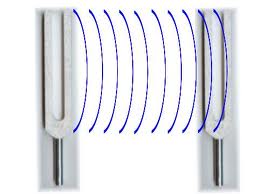 The Webs We Weave
The Webs We Weave
Over the course of the year, I have examined our awareness and shared ideas on how to develop it. In considering all of the ideas, one of the most important ones is the “removal” of the impediments we have created for ourselves. This remains the challenge, regardless of whether the goal is personal growth, finding balance or developing higher awareness. Today I will look at this challenge in a slightly different way to bring in some new ideas for you to consider.
It becomes easier to work on our impediments (issues or growth opportunities) when we understand what they are. This allows us to take a more active role in working past them. The impediments I refer to come in the form of our own thoughts. Our thoughts are the embodiment of our reactions to experiences. We created and empowered them and collectively they are the “body” of our rational mind.
What we may view as our issues or flaws are merely the consequence of thoughts we have, the relationship these thoughts have with other thoughts. The underlying nature of “how things work” determines how these issues manifest in our lives. I have spoken to “how things work” before and the key element is the Law of Action and Reaction. It is the most fundamental rule we need to accept when seeking and that rule is the following:
What we manifest in life are the consequences of the choices we have made, even if we are not aware of having made them.
I mentioned that our thoughts are the body of our rational mind, yet this is not all there is to our rational mind. We have thoughts of different types or planes based on nature of the thought itself; you could see this as degrees of complexity. To get an idea consider that we have thoughts and thoughts about those thoughts and thoughts about those thoughts about thoughts and so on. It is best to simplify this and simply imagine these thoughts as having various strengths or potencies and attributes; you could picture them as a complex light pattern or a sound or something else. Now, imagine that there are layers of connections between those of the same type as well as “up or down” to those of other types, like magnetic waves or webbing, binding them to each other. Activating one activates those connected to it.

You can view the connections as relationships based on commonalities, which I have referred to before. Collectively, all these thoughts and interconnections, along with how they integrate with our brain, are our rational mind. For example, we may have learned to react negatively to a certain experience; the result being we try to avoid having that experience. When we cannot avoid it, we manifest lower thoughts and emotions about it. We may not even be aware of what we are reacting to; we only notice our reaction by our emotions, thoughts or perhaps sensations in our body. In any event, our reaction was “caused” by a particular piece of webbing. The strength of our reaction can be a result of how strong the thought forms are and how many different webs are connected. You can consider a particular web as an action-reaction set (A-R set) which is merely a trigger or a rule we have established to deal with certain “actions” or experiences. You can also view it as a capability or potential.
To illustrate this point, let us say we reacted to a new experience in a particular fashion. Our initial reaction to this experience manifested a thought form(s) such as “this happened, I hurt and I do not like it”. We may not like it because it just is not compatible with us, not that it is bad, or we could have improperly assessed the consequence to the wrong experience (the cause of the hurt) or what we do not like could even be another A-R set that was also activated by the experience. We do not consider that the “I” we refer to is not the true “us” rather it is the programmed us. Nonetheless, this thought will trigger an emotion. Subsequent experiences that included “this happened” may reinforce it or they can actually modify and even negate it if we act or reacted differently.
Reinforcing thought forms sets up an A-R set (an if-then scenario) such as “if such and such happens, I must leave, avoid it or I will feel hurt and scared”. Any future experience that meets the “if” part of this statement, that is it has a strong enough commonality with “such and such”, will activate and connect to this new thought form which is the "then" part. What we will notice is our emotional reaction to it. We now express ourselves through it, through this part of our web. This is being the “I”, the ego separate from who we really are beyond the layers of webbing. Do note that while we are looking at the A-R sets that manifest lower emotions, these are only some of the sets we have. Others trigger higher ones or other beneficial actions or reactions on our part.

The A-R set we are considering is one of the webs I referred to earlier. The consequence to us is that when experience activates or triggers such an A-R set, we feel uncomfortable or whatever based on the “then” side of it. We are responding as we have learned to do. If we no longer want to respond or react that way then we need to unlearn it. We do this by dealing with the web we have manifested and eventual the thought root thought of “this happened, I hurt and I do not like it”, which I will get to in due course.
Figuratively speaking, the first step we take, in order to be free of the web, is to let it go. The second step is to balance out or eliminate the original thought(s) otherwise it can resurface. There are many ways to do this; their success rate often depends on whether the temperament of the person is in alignment with the technique than the technique itself.
Continuing with the example, doing step one means neutralizing, letting go of or releasing the web that connects the thoughts; however, in order to do this we must first find the web or the action-reaction set. This may sound hard, but it really does not have to be. Sometimes it is easy because the issue is highly polarized or it is a minor issue. This means it is not highly connected to many other A-R sets. In these cases, we can almost hear ourselves saying what we are reacting to or we know the “cause” of our discomfort, fear or other lower emotional reaction. This is our access to the web, access that allows us to view the A-R set. We can also get at the root thought as well.
Once identified, we can now deal with the thought form almost as a separate entity. We can treat it as such because a thought form is no more me than the cells of my skin are. How we deal with it depends on what skills we have developed, that is the tools in our tool set. We can work on it during meditation, we can try to think about it as rationally and objectively as possible to release it or have an epiphany about it. This happens when we find the key to unlock the webs. It happens when we become one with the experience and in that moment of unconditional clarity we see all the webs that are part of the issue and accept our ignorance and that of others for what it truly is. This is the power of unconditional love, eradicating our issues. Its success hinges on how completely we have circumscribed the problem; by this, I mean we must fully grasp all the webs that are part of the A-R set.
Knowledge of the mechanics or physics of how this happens is not needed for us to let go of most issues, at least not until one is further along on the path. This is because there are other consequences of the Law of Action and Reaction that we can take advantage of when we understand its deep meanings. It mostly affects the rate at which we can progress and how we deal with issues. We can find and let go of issues without understanding the mechanics.
It is possible to simply consider our reaction to the experience and realize that our thoughts about it were not helpful. In the example we have been using, perhaps we attribute our hurt to the wrong cause by erroneous thinking or superficial observation, we may have sought to exert control over something we cannot control or maybe we realize that while it may have happened a few times, enough to reinforce it, it does not always occur and we are restricting ourselves by clinging to the fear or concern that it will.
Recognition alone can release the energy we have tied to experiences through the thought forms we manifested. We do not have to go through rounds of therapy or weeks or even months of effort to release something. Not being able to let go of issues can be indicative of not wanted to let the thought form go, something very common when we blame others or feel guilty as both of these imply a “debt” of some sort. Still, forgiving someone for something can provide this kind of release if the forgiving includes all the associated “webs”.
An example of this would be such as where we lost a job because someone lied about us. If we hold onto the emotions this can create we are locking ourselves into a mind cage of our own making; however, even forgiving them for lying will not be sufficient to release the lock, we would also need to forgive them for it costing us our job, or any other negative outcomes we attribute to the lie. In the latter case, we created more than one web or reaction set. In order to release it fully we need to release all the associated webs or reaction sets.
Obviously, when the issue is bigger either the web is stronger, the number of other associated webs (issues) is larger or both. Big issues do not tend to happen overnight, though one traumatic event can manifest very tough webbing.

Whether an issue is important to one’s life depends on what is significant now. We learn what this is by paying attention to our lives and working on what presents itself. We take some time to examine how we feel as well as what we think, to examine our experiences and in turn, how we feel and think about them. For this reason, it is important to develop some thought forms that direct our non-conscious activities.
Our true intent affects what our lives present to us so we must be careful with our intent. Remember, energy follows intention, so we can misplace it if we formulate our intent solely based on our “flawed” rational or thinking mind. If our intent is to fix what is wrong or out of balance then we are embedding a judgement into our intent. We should avoid this and can by not establishing our intent without contemplation or meditation on it. Doing so this way also helps because in such a state we tend to clearer of “mind” and have less of our “stuff” active. This helps keep our intent aligned with our true self.
We must take joy in our journey and our effort regardless of the results for it is what we have decided to do. We should not see ourselves as anything less than perfect, to do otherwise means we judge ourselves, our worthiness, capabilities or our intent affecting them all. We should try not to see our purpose as fixing our mistakes or dealing with issues and then align our intent with this. Our intent should be to be fully in the moment as much as possible. When we enjoy what we are doing, the work becomes easier. Thoughts to the contrary are not in balance and add to our burden by strengthening the web. This makes releasing our issues very difficult. Sometimes, when you find yourself struggling with an issue, the best therapy is to chuckle WITH ourselves about it. We may not solve it then, but we will not be adding to it, further, we are reducing its strength and will likely be more open to changing it when we look at it again, and we will.
Now, even when we have worked on the web we still need to make sure that we have changed or balanced the initial reaction of “this happened, I hurt and I do not like it”. We do this the same way we worked on the web as mentioned above, though in this case our focus is on the “and” part. What happened and the hurt we felt were the experiences, the “I do not like it” was our minds reaction. We do not have to like the hurt to get over it, we have to recognize that in the act of not liking it we have made a judgment, the judgment is part of “I” and is what keeps us separate from ourselves. Instead, we can learn to recognize that A leads to B and work on why we attracted A. That is, “what is it about us that led us to have the experience in the first place?”
At times one might be inclined, in looking at their lives, to ask themselves “what did I do to deserve or attract this?” Consider that contemplating this can be a benefit or a detriment depending on why and how we do it. For example, it is not helpful to wallow in our emotions or seek reasons to deny responsibility for our lives.
Admittedly, discovering the “whys” can be a challenge, even for the advanced seeker. Some of what we experience is part of what our higher self has chosen to experience in this lifetime; however, while this is usually what happens it does not have to. We are having the experiences we are having because of what we learn through them, if we learn the lessons another way we no longer need to have those experiences.
So, look for relationships between your thoughts and then start to consider them more than the individual events or thoughts. We can do this through meditation by getting grounded, cleared and centered and then we bring forth a memory of the the events and ask ourselves "What do they have in common?" We turn our focus away from the thoughts themselves and try to "feel" or "hear" their commonality. Figuratively, consider each memory or thought as a little "orchestra" and rather than think about them, feel for a sound or instrument (a vibration) that they all have in common. The "strongest" webs tend to be the oldest as they have our reactions to many events and experiences tied to them.
This last point can actually help if we remember some of the influences we were subjected to as children, for this is where "webbing" or root thought was originally manifested. Consider early influences, the types of thoughts you had and heard, what you remember hearing and how you felt about them. If you do this during meditation, as you do keep the thoughts you are considering in mind. Do this not by thinking of the thoughts, rather "know and feel" them as being there while you consider the influences or whatever comes to mind. Another way is to just scan over the years, the places you lived, the people you met, the schools you attended, the kids you played with, aunts uncles....and just let the memories flor. You will find that there is a connection between the memory you found and the thoughts you are trying to deal with, that is if you are quiet and centered enough because you will "feel" a tremble, twinge or something like that in your energy or you body.
There is a last point to remember, that being our beliefs about life, what it is, and its purpose and so on significantly affect what we can and cannot do. If we are uncertain that our experiences happen for a reason, that we have a purpose in this life or that we are responsible for the events that happen to us it is unlikely we will be able to change or take back our lives from the control exerted by our rational mind. If you are struggling consider this, it could be part of what is holding you back.
All of this said, be good to yourselves, see yourself as worthy regardless of what flaws you may feel you have, accept that we are all here to work on things so there should be no shame in admitting it to ourselves. What others will admit to is not our concern. So many have said that we cannot move past our issues until we learn to love ourselves, I agree and would add that the more we pay attention to now, try to be objective and less judgmental the more our unconditional love develops and it cannot help but be extended to ourselves.
© 2011 Allan Beveridge
